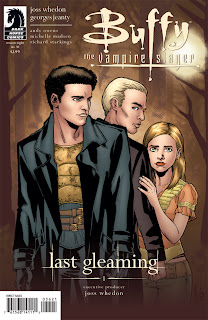Scarlet #1 - #3
Created by Brian Michael Bendis and Alex Maleev
I wanted to wait a bit before reviewing Scarlet because I wanted to give her a chance to develop. It’s sad to say that I'm still having trouble getting behind this comic.
 Scarlet is writer Brian Bendis' newest creator-owned work, and although I believe it’s success is largely a case of the story rising above its thin premise, it's definitely different from everything else out there. It follows a young woman who sees the man she loves get killed by a crooked police officer.
Scarlet is writer Brian Bendis' newest creator-owned work, and although I believe it’s success is largely a case of the story rising above its thin premise, it's definitely different from everything else out there. It follows a young woman who sees the man she loves get killed by a crooked police officer.When the "system" protects the policeman, she decides to change the world by taking on the corruption herself. As a result, in the first three issues of this comic we've now seen her kill three police officers. When you throw in the noir atmosphere and crisp dialogue that Bendis and Maleev have mastered, the series becomes more interesting than its basic premise. (Not to mention the character’s tendency to break the fourth wall and talk directly to the readers)
We've seen crooked cops in fiction before, and we've seen revenge killings, but the problem here is that we're only seeing part of the story and questions quickly arise concerning the character’s trustworthiness, as well as how Bendis plans on making the readers active participants in the story. (The protagonist repeatedly tells readers to get involved, but is that really possible?)
One part that is fantastic is the art by Alex Maleev - it's a combination of near-photographic images with a painted style that's like no other. It's amazing work.



















